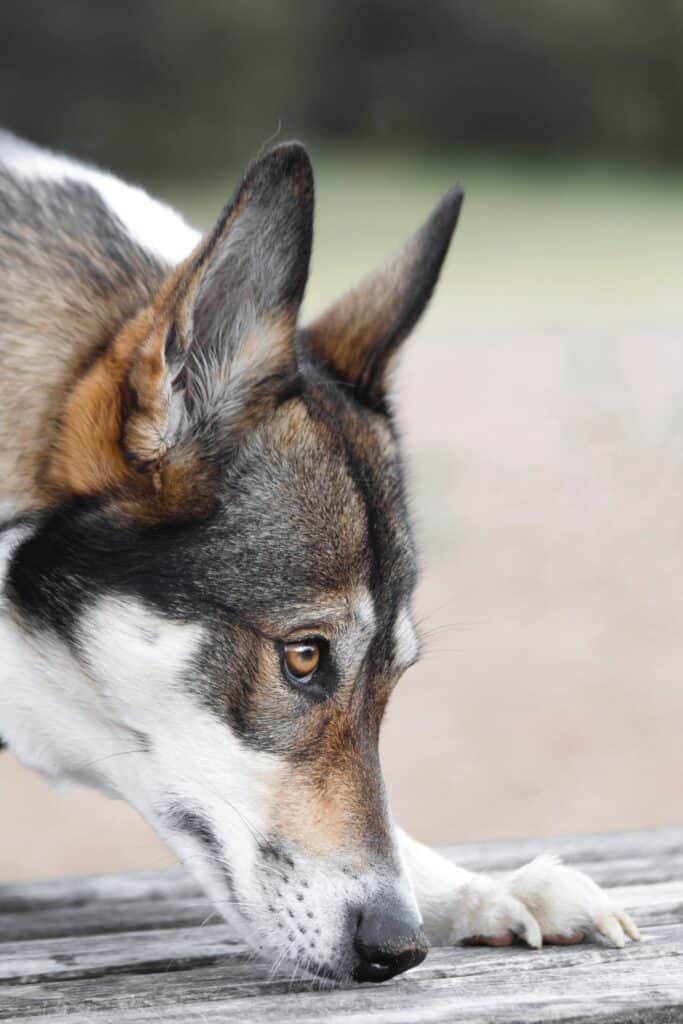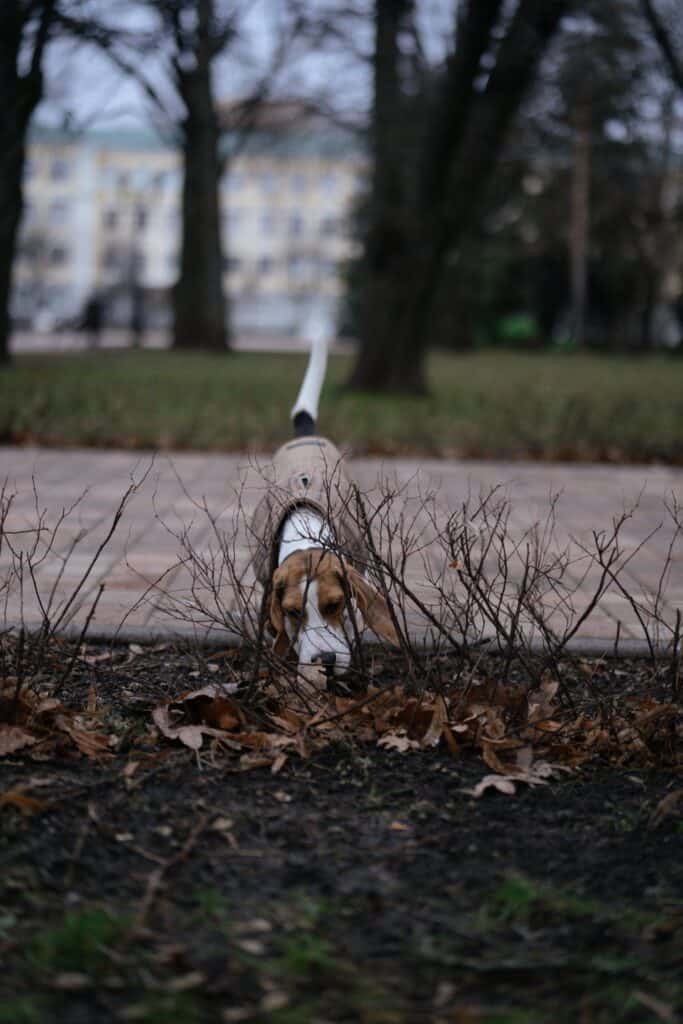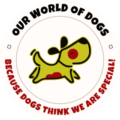Introduction
Imagine perceiving the world not through sight, but through a world of scents. For our canine companions, this is their reality. Dogs experience their environment in a profoundly different way than humans do, primarily relying on their extraordinary sense of smell. This remarkable olfactory ability shapes their understanding and interaction with the world around them. “Canine Cartographers: Navigating the World Through a Dog’s Nose” explores this fascinating aspect of canine cognition. It offers deep insights into how dogs use their noses to map and navigate their surroundings, revealing a world that is intricate and nuanced, perceived through a symphony of scents.

A Dog’s Sensory Experience
Dogs experience the world in a way that is fundamentally different from humans, primarily through their extraordinary sense of smell. Their olfactory capabilities are not just slightly more advanced than ours; they are estimated to be tens of thousands of times more sensitive. This incredible olfactory power allows them to perceive and interact with their environment in a way that is difficult for us to fully comprehend.
When a dog inhales, it doesn’t merely register the presence of various scents as humans do. Instead, it processes a complex array of olfactory information, interpreting a detailed and layered story that is invisible to our senses. Each scent carries a distinct narrative, revealing details about the history and current happenings of its surroundings. For example, a dog can sniff a tree and determine not only what other animals have been there but also when they were there, what their health status might be, and even their emotional state.
This remarkable sense of smell contributes to a dog’s unique spatial awareness. Unlike humans, who primarily rely on visual cues to navigate, dogs use olfactory landmarks to create mental maps of their environment. They can detect and follow a person’s path even hours after the person has passed through an area. This ability is why dogs are such effective trackers and search-and-rescue workers; they can trace scent trails that are completely imperceptible to humans.
Moreover, dogs can sense the presence of other animals in their vicinity, often long before they see or hear them. This capability is not just about recognizing the scent of another animal; it’s about interpreting subtle changes in the scent landscape that signal another creature’s presence.
Dogs also have the ability to find their way home across unfamiliar terrain, guided by the invisible scent trails they have catalogued in their memory. This skill, often referred to as “scent mapping,” allows them to navigate complex environments with a level of precision that is astounding.
In essence, a dog’s world is defined by scent. Every breath brings a flood of information about their environment, painting a vivid, dynamic picture of the world that is rich in detail and meaning. This sensory experience shapes every aspect of their perception, communication, and understanding of the world around them. Understanding this can deepen our appreciation of the complexity and sensitivity of our canine companions.

Mapping Techniques
In recent years, scientific advancements have enabled researchers to delve deeper into understanding the canine world, particularly how dogs use their exceptional sense of smell to navigate and interpret their surroundings. One of the most innovative approaches in this field has been the integration of GPS and scent-detection technology to track dogs during their walks. This sophisticated method has led to the creation of ‘scent maps’ and ‘spatial maps’, which are groundbreaking tools in visually representing a dog’s interaction with its environment.
These scent maps are more than just paths that a dog walks; they are intricate diagrams that illustrate where and how a dog’s attention is drawn to various scents. By combining GPS tracking with sensors that detect a dog’s sniffing patterns, researchers can create detailed maps showing the routes taken by dogs and the points where they stop to sniff more intensely. These points of interest, where a dog spends more time sniffing, are marked as ‘hotspots’ on the map, indicating areas rich in olfactory stimuli.
Spatial maps, on the other hand, provide a broader view of how dogs navigate through different environments. These maps take into account the physical layout of an area and overlay it with the dog’s scent-focused exploration paths. This combination offers fascinating insights into how dogs perceive and move through space, highlighting the differences between human and canine navigation.
One intriguing revelation from these maps is the way dogs use olfactory landmarks to orient themselves. Unlike humans, who predominantly rely on visual cues for navigation, dogs create and follow a map based on olfactory landmarks. For a dog, a fire hydrant, a tree, or a street corner isn’t just a visual marker but an olfactory checkpoint rich in information. Each of these landmarks carries a unique scent profile, which includes layers of information left behind by other animals, environmental changes, and human activity.
A dog’s ability to catalog and remember these olfactory signatures is extraordinary. They don’t just recognize these scents; they remember them over time, creating a mental map that is as detailed and nuanced as any visual map we might use. This capability allows dogs to navigate through their world in a way that is deeply rooted in their sensory experience, providing them with a rich, multi-dimensional understanding of their environment.
These mapping techniques, therefore, offer us a glimpse into the canine experience of the world, showcasing a complex, scent-driven perspective that challenges our human-centric view of navigation and space. Understanding these patterns not only enhances our knowledge of canine behavior and cognition but also underscores the profound intelligence and adaptability of our canine companions.

Real-life Applications
The insights gained from understanding how dogs perceive the world through their sense of smell have a wide range of practical applications that extend far beyond the realm of theoretical knowledge. These applications have the potential to revolutionize not only how we interact with our canine companions but also how we integrate them into our human-centric world.
- Enhanced Dog Training Techniques: In the realm of dog training, incorporating the knowledge of a dog’s olfactory perception can vastly improve communication and training methods. Traditional training often relies heavily on visual and auditory cues. However, recognizing the primacy of scent in a dog’s world allows trainers to develop techniques that align more closely with a dog’s natural inclinations and communication methods. For instance, using scent trails and olfactory challenges in training exercises can make them more engaging and effective for dogs, leading to quicker and more profound learning experiences.
- Search and Rescue Operations: The application of a dog’s scent mapping capabilities is particularly transformative in search and rescue operations. Dogs trained in these operations can track and locate individuals lost in various terrains, from dense forests to urban rubble, by following their unique scent signatures. Understanding and harnessing a dog’s ability to navigate and map terrains using scent not only enhances their efficiency but also increases the success rates of these critical missions. This advanced knowledge can lead to the development of specialized training programs for search and rescue dogs, making them even more adept at navigating complex scent landscapes in emergency situations.
- Urban Planning and Design: Urban planners and designers can also draw valuable insights from understanding a dog’s sensory experience. Creating dog-friendly urban spaces involves more than just adding parks or open areas. By considering the importance of scent in a dog’s life, urban spaces can be designed to cater to their sensory needs. This includes incorporating varied scents and creating safe, sniffable routes in parks and city streets. Such designs could lead to designated sniffing gardens with a variety of plants and natural elements that provide rich olfactory experiences for dogs. Additionally, ensuring safe pathways where dogs can explore and navigate comfortably can significantly enhance the quality of life for dogs in urban settings. These dog-centric designs not only benefit the canine population but also encourage responsible pet ownership and foster a more inclusive community environment.
In summary, the real-life applications of understanding canine olfaction open up a new dimension in our interaction with dogs. Whether it’s in enhancing training methods, improving search and rescue operations, or redesigning urban spaces, acknowledging and catering to the sensory world of dogs can lead to more harmonious and effective human-dog relationships and environments.
Understanding Canine Cognition and Behavior
Gaining a deeper understanding of how dogs perceive the world, particularly through their sense of smell, not only fascinates but also provides crucial insights into canine cognition and behavior. This knowledge can revolutionize the way we interact with and care for our dogs. For instance, understanding a dog’s sensory experience can help explain certain behaviors that might otherwise be misinterpreted. Dogs may exhibit anxiety or excitement in response to olfactory stimuli invisible to us. Recognizing this can lead to more empathetic and informed responses from owners and trainers, mitigating behavioral issues and enhancing the dog-human bond.
Moreover, this understanding has implications for the health and wellbeing of dogs. Sensory enrichment, through exposure to new and varied scents, can be a vital aspect of a dog’s life, particularly in urban environments where natural scent landscapes are limited. Providing dogs with opportunities to explore and engage with a diverse range of smells can significantly improve their mental health and overall quality of life. This can include designing dog parks with a variety of plants and natural elements, or even creating scent-based games and activities at home.

Summary
The exploration of the world through a dog’s olfactory senses not only enriches our understanding of these beloved companions but also invites us to appreciate a largely unexplored aspect of cognition and perception. By recognizing and valuing the intricate and sophisticated nature of a dog’s sensory experience, we can deepen our empathy and enhance our relationship with them. This newfound appreciation can also encourage us to view our own environments from a different perspective, acknowledging the layers of sensory information that we, as humans, often overlook.
Furthermore, this understanding underscores the need for more dog-centric approaches in various aspects of life, from dog training and care to urban planning and design. It prompts us to create environments and experiences that cater to the natural instincts and needs of dogs, ensuring their wellbeing and happiness in a human-dominated world.
In essence, delving into how dogs map and perceive the world is not just an exercise in scientific curiosity; it’s a journey towards a more profound and holistic understanding of our canine companions. It bridges the gap between human and canine experiences, fostering a deeper, more respectful, and mutually enriching coexistence. As we continue to explore and learn from our dogs, we open ourselves to a world rich in sensory experiences, seen through the lens of those who have been our faithful companions for millennia.

